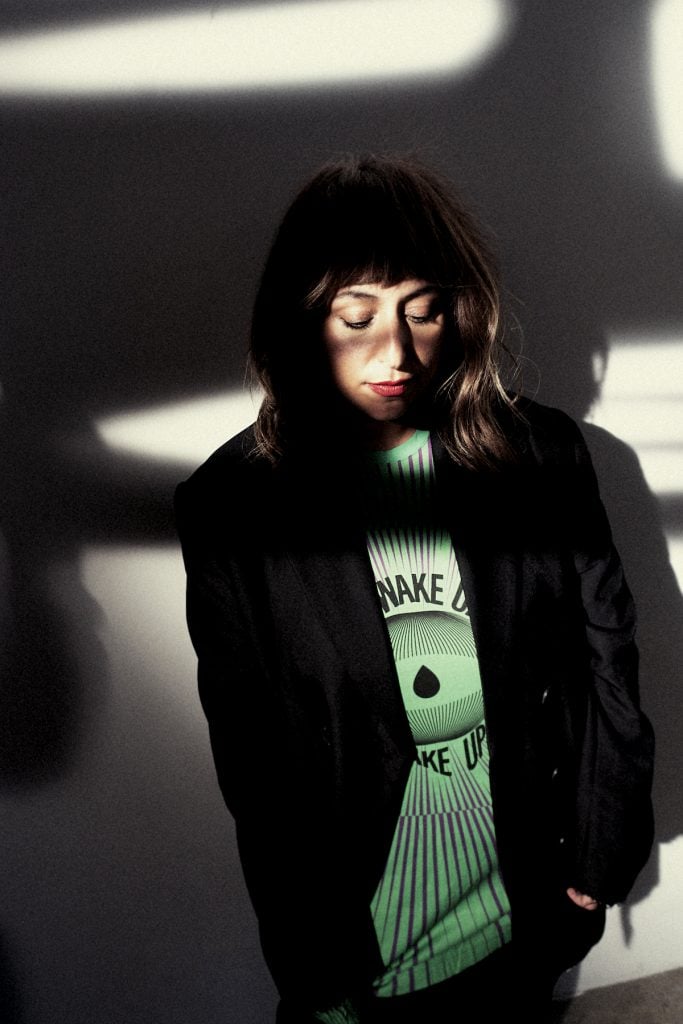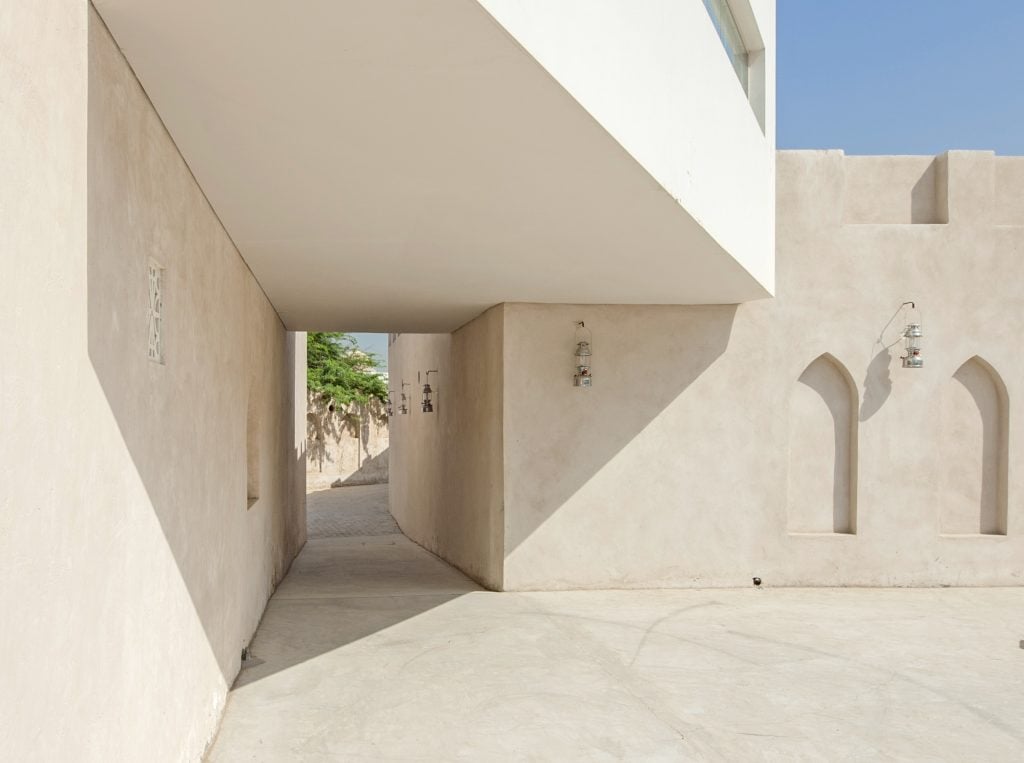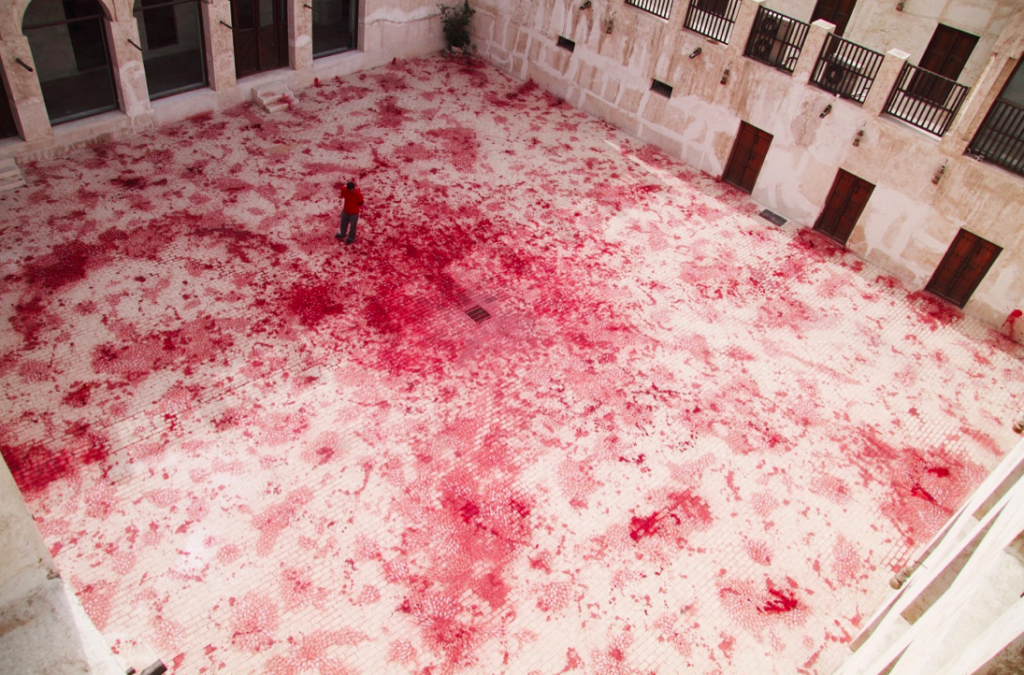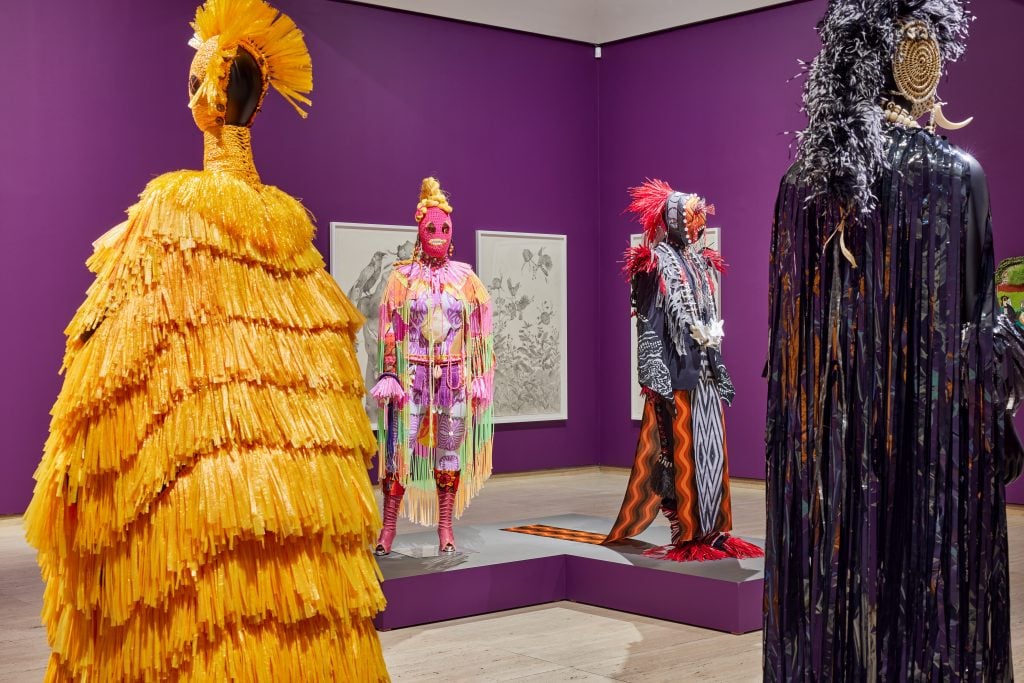Art World
How Curator Hoor Al-Qasimi Is Working to Redefine Representation
The director of the Sharjah Art Foundation is curating upcoming editions of the Aichi Triennale and the Biennale of Sydney.

The director of the Sharjah Art Foundation is curating upcoming editions of the Aichi Triennale and the Biennale of Sydney.

Shreya Ajmani

Hoor Al-Qasimi is one of the most influential curators in the world right now. As the president and founding director of the Sharjah Art Foundation, she has shaped contemporary art practice in the Emirate, and her influence will now be felt much further afield. She was recently named the artistic director of the 6th Aichi Triennale and the 25th Biennale of Sydney, which will take place in 2025 and 2026 respectively.
Al-Qasimi was only 22 when she took the helm of the Sharjah Art Biennial—the arts festival founded by her father Sheikh Sultan bin Mohammed Al Qasimi in 1993—which preceded the foundation she went on to set up in 2009.
Her curatorial sensibility was inspired by a transformative visit to Documenta in Kassel, Germany. Despite her background as an artist, her thoughts turned toward the broader contributions she might make to her home biennial. “I was seeing works about Palestine, about Apartheid South Africa, in Germany—in a town nobody knows, unless you know Documenta,” Al-Qasimi told me. “So I wondered why you have to come to a place like this. What about the people who can’t afford to come to Germany? This was my first experience of that kind. It really transformed me as a visitor.”

Al Mureijah Square, 2016. Image courtesy of Sharjah Art Foundation
The curator’s enduring interest in representation stems from the stereotyping she encountered as an art student in the late 1990s and early 2000s in London. “I realized I didn’t see people like me among the students,” she recalled, later clarifying over email that she meant she didn’t see people like her “in exhibitions.” “We were expected to perform or be a stereotype.” This prompted her to question, “What is our space within the art scene?” This inquiry continues to fuel her work today. Al-Qasimi is deeply invested in fostering cross-cultural dialogues worldwide, while amplifying voices from the Global South. However, she reiterated, “At the end of the day, I don’t want the artist to feel like they’re ticking boxes—it’s because of their practice that they’re included.”
Drawing from this philosophy, Al-Qasimi made history as the first non-Japanese Artistic Director of the Aichi Triennale in Japan. However, she’s no stranger to the country. She has visited over 60 times and is fluent in the language. As a starting point, she took an interest in popular culture, specifically manga, graphic novels originating in Japan. “I realized a lot of artists grew up and were interested in that. I want to reach out to the people who read those things to say, ‘this is for you, you should come’.” She added over email that she meant “people who read manga.”

Mary Sibande, A reversed retrogress, scene 1, (2013). Installation view: Sharjah Biennial 15, Al Hamriyah Studios, 2023. Image courtesy of Sharjah Art Foundation. Photo: Motaz Mawid
The theme of the Triennale emerged from a desire to visualize the aftermath of destruction. Adonis’s poem, A Time Between Ashes and Roses, lends its title to this edition. It contemplates what follows after devastation, while giving voice to a wisp of hope in its closing lines: “When everything shall be extinguished / When everything shall begin again.”
“I’m interested in human relationships and the environment in different ways: one kind is wholesome and patriarchal, and one with nature,” Al-Qasimi said, later clarifying over email that she meant “matriarchal.” “Then there’s the other extreme, which is a post-apocalyptic extreme. When you think about the relationship with humans, you think about how they’re destroying the planet in many ways, including war and capitalism.”
Connecting her research to this idea, she stumbled upon a manga from the 1960s called Kitarubeki Sekai (meaning “next world”). “It talks about two nuclear powers, and which will be the first to win and use their nuclear weapons. It’s supposed to represent the USSR. There’s an accidental explosion, and these creatures are formed called the fumoon, these animal, human-like creatures that are going to save the planet,” she explained. “I thought that was very poetic and beautiful as well.”

Imran Qureshi, Blessings Upon the Land of My Love, 2011. Installation view: Sharjah Biennial 10, Sharjah Art Foundation, 2011. Commissioned by Sharjah Art Foundation
In contrast, her approach to the Biennale of Sydney reflects a different sensibility. Scheduled for March 7 to June 8, 2026, Al-Qasimi emphasizes that it is “very local-specific.” She is no stranger to the arts festival, having visited every edition since 2012, and she is particularly interested in celebrating Aboriginal artists. “I always think it’s important if you’re doing a biennale, to engage with the city and the people. Whenever I work on a project, I like to spend time there, and not just have a set exhibition.” She added: “When I was in Sydney, I was staying late with the artists during studio visits. They were all leaving the studios and I was still there. I was the last person to leave the building. It was pitch black outside.”
This quality characteristically traces back to her early days at the Sharjah Art Biennial, to which she credits much of her early curatorial expertise. “I was cleaning the floor, sticking labels, hanging works, and working with the technical team who are still with me today.”
She recalled a time of being very conflicted while pursuing her Masters in painting before switching to a curatorial degree at the Royal College of Art. “I would go and stare at this massive canvas every day and think, ‘What am I doing? I have a job at home and I’m here painting, but I don’t know what to paint because my mind is not here.’ I was really conflicted to a point where I was listening to the Quran at art school.”

Installation view, ‘Ten thousand suns’ 24th Biennale of Sydney 2024, Art Gallery of New South Wales, featuring art by Pacific Sisters (foreground) and Robert Gabris (wall). Photo © Art Gallery of New South Wales, Christopher Snee
“Years later when some of my tutors came and saw what we were doing in Sharjah, they said, ‘Oh, this is what you were doing!’ Maybe because my attendance wasn’t so good,” she chuckled. Thinking back to the cultural landscape when she was growing up in the UAE, she said: “When I started, there weren’t many art spaces. In the Arab world, and a few places outside the world, the Sharjah Biennial was very well-known. So, it was normal growing up with culture in Sharjah.”
“Slowly we began collaborating with galleries in Dubai, where we had the art fair. Then more recently, we had the Abu Dhabi Art Fair, and the museums [there]. Things are growing,” Al-Qasimi added, in reference to the Saadiyat Cultural District in Abu Dhabi, home to the Louvre Abu Dhabi, and soon to be home to the Guggenheim Abu Dhabi Project. “There is more of an exchange now. People want to see more exhibitions. It’s nice to see that diversity in programming as well,” she observed, leaving a lingering sense of optimism about the region’s cultural evolution.
The Aichi Triennale is on view at Aichi Arts Center, Aichi Prefectural Ceramic Museum and Seto City, Aichi, Japan, September 13 through November 30, 2025,. The Biennale of Sydney, Australia, is on view March 7 through June 8, 2026.